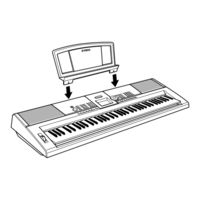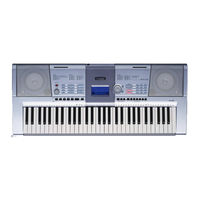
Yamaha PORTATONE PSR-295 Manuals
Manuals and User Guides for Yamaha PORTATONE PSR-295. We have 4 Yamaha PORTATONE PSR-295 manuals available for free PDF download: Owner's Manual, Mode D'emploi
Yamaha PORTATONE PSR-295 Owner's Manual (94 pages)
Brand: Yamaha
|
Category: Electronic Keyboard
|
Size: 3.59 MB
Table of Contents
Advertisement
Yamaha PORTATONE PSR-295 Owner's Manual (94 pages)
Yamaha Musical Instrument Owner's Manual
Brand: Yamaha
|
Category: Electronic Keyboard
|
Size: 3.73 MB
Table of Contents
Yamaha PORTATONE PSR-295 Owner's Manual (98 pages)
Brand: Yamaha
|
Category: Electronic Keyboard
|
Size: 4.61 MB
Table of Contents
Advertisement
(French) Yamaha PORTATONE PSR-295 Mode D'emploi (98 pages)
Yamaha Digital Piano Owner's Manual
Brand: Yamaha
|
Category: Musical Instrument
|
Size: 7.2 MB



